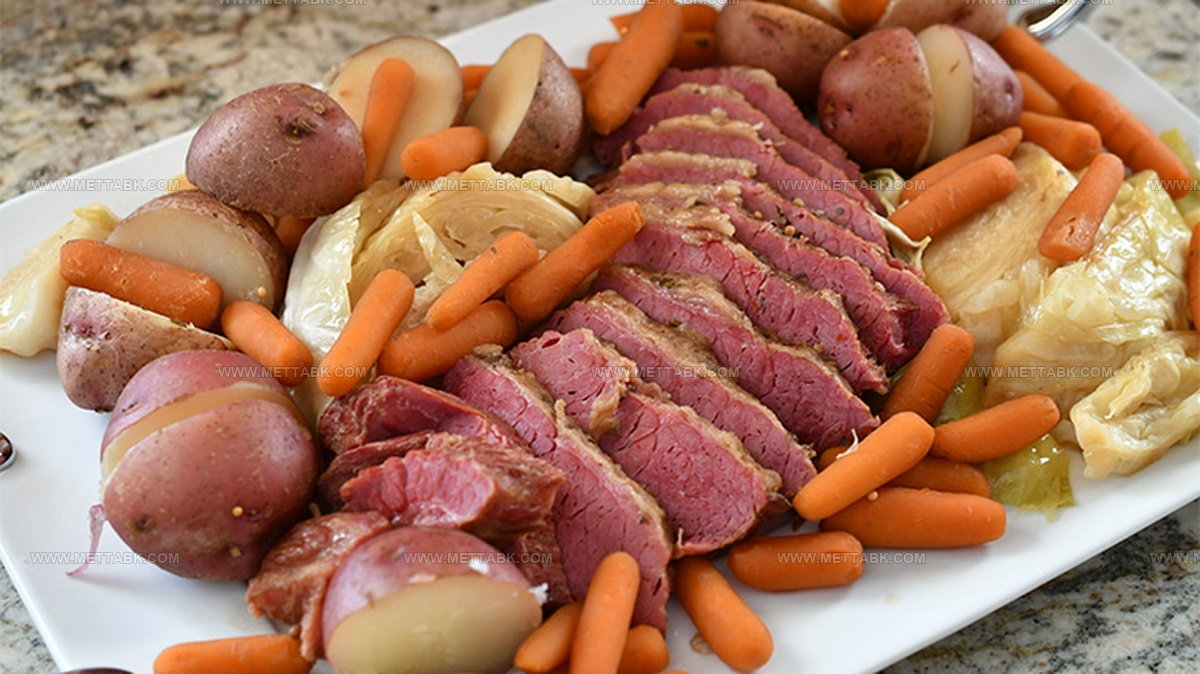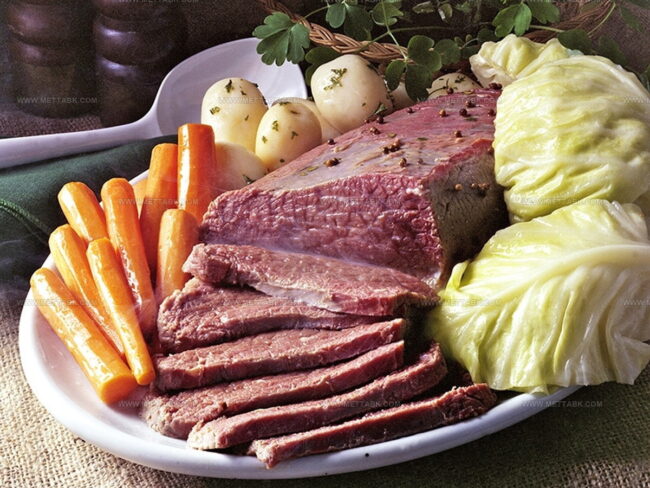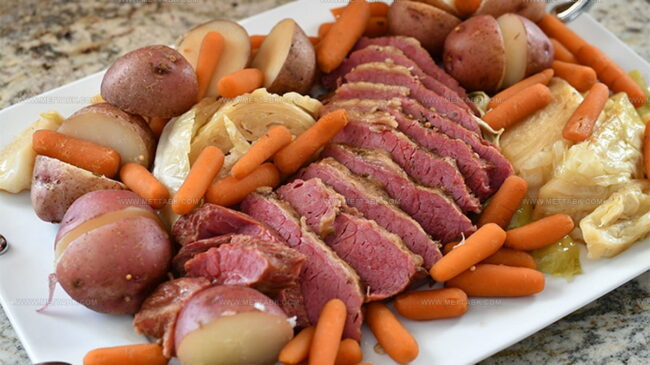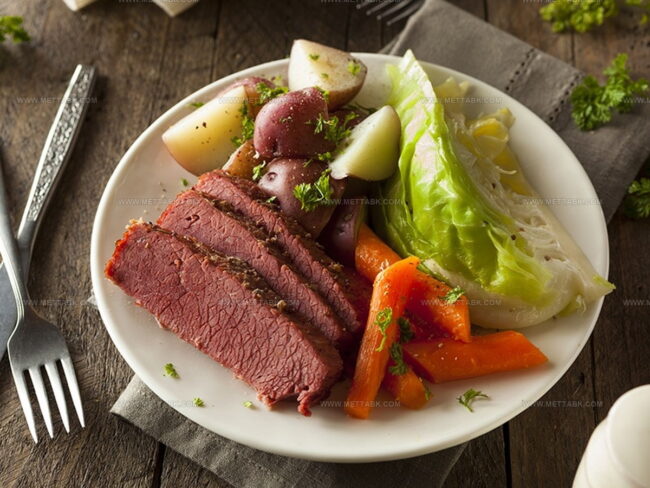What Does Corned Beef Taste Like? The Full Flavor Story
Corned beef has intrigued food lovers for generations, sparking curiosity about its unique flavor profile.
Originating from traditional preservation methods, this hearty meat carries a rich culinary history that extends far beyond simple taste.
Salt-cured and carefully prepared, corned beef represents more than just another protein on your plate.
The complex preparation process transforms an ordinary cut of meat into something extraordinary and memorable.
Each bite promises a robust experience that connects you to generations of cooking traditions.
Regional variations and different cooking techniques contribute to its distinctive character, making corned beef a fascinating subject for culinary enthusiasts.
Your taste buds are in for an unexpected journey through flavor, texture, and cultural significance that goes well beyond a simple meat description.
What Is Corned Beef?
Salt-packed beef brisket sits as a classic dish with deep roots.
Large rock salt crystals play a key role in creating this meat's unique flavor and texture.
Beef brisket originates from a cow's chest area.
Meat experts know this specific section contains tough muscle fibers that need careful cooking to reach maximum softness.
Slow heating methods help break down those strong muscle connections, resulting in a tender final product.
St. Patrick's Day celebrations across North America often feature this meaty dish alongside green decorations and Irish-inspired meals.
Restaurants and home cooks share this traditional recipe, connecting diners to Irish cooking heritage.
Flavor Of Corned Beef
Corned beef is a savory, hearty meat that’s famous for its unique blend of flavors and tender, juicy texture.
The beef is cured in a salt brine, giving it a salty, robust taste that stands out in every bite.
Traditional corned beef is seasoned with spices like peppercorns, mustard seeds, bay leaves, and sometimes cloves or allspice, adding subtle warmth and depth.
Slow-cooking makes the meat fork-tender and brings out its natural beefy richness, with a touch of fat that adds extra flavor.
A gentle sweetness often lingers from the brine and spice blend, balancing the saltiness.
The blend of brine and spices gives corned beef a comforting, mouthwatering aroma that fills the kitchen.
Whether sliced for sandwiches or served with cabbage and potatoes, corned beef delivers a bold, flavorful experience every time.
Corned Beef Flavor Differences: Canned vs. Fresh
Corned beef comes in both canned and fresh versions, and each has its own flavor, texture, and best uses in the kitchen:
Cooking Corned Beef At Home
Cooking corned beef at home is easy and rewarding, filling your kitchen with savory aromas and making for a comforting meal everyone can enjoy:
Regional Dishes Featuring Corned Beef
Corned beef shows up in comfort food dishes around the world, each region adding its own flavors and twists to this savory meat:
What To Eat With Corned Beef
Side dishes that pair well with corned beef include cabbage, carrots, potatoes, and onions.
Cooking these vegetables in the same pot as the meat helps them soak up all its rich flavors.
Mustard or horseradish work great as condiments that highlight the meaty saltiness.
Irish soda bread makes an excellent companion to the dish.
Bread's sweet and nutty notes create a nice contrast with the salty meat, balancing out each bite perfectly.
Do Irish People Really Eat Corned Beef And Cabbage?
Corned beef and cabbage might seem like a classic Irish dish, but its history tells a different story.
Restaurants in Ireland rarely serve this meal, and it's more of an American creation than a true Irish tradition.
Menus across Ireland seldom include this specific combination.
Irish immigrants in America first started making corned beef and cabbage during the early 1900s.
They found beef was less expensive than the bacon typically used in Irish cooking.
Slowly, this new recipe became a beloved part of Irish-American food culture.
St. Patrick's Day celebrations in the United States now feature this dish alongside Irish soda bread and shepherd's pie.
Authentic Irish celebrations actually serve a different main course.
Traditional St. Patrick's Day meals in Ireland include boiled bacon with cabbage and potatoes, showcasing the real roots of Irish cooking.
Difference Between Corned Beef And Pastrami
Meaty delights from the deli world share some tasty similarities but come with unique characteristics.
Corned beef and pastrami sit close to each other on the flavor spectrum while maintaining distinct identities.
Meat selection marks their primary difference, with corned beef sourced from brisket and pastrami crafted from navel or round cuts.
Cooking techniques set these proteins apart in delicious ways.
Corned beef goes through a curing and brining process that softens its texture.
Pastrami takes a different path, getting smoked and coated with a special spice mix before being sliced super thin.
Salt levels run high in corned beef, creating a tender bite, while pastrami offers a firmer, spicier experience.
Sandwich lovers can appreciate both meats for their mouth-watering qualities.
Does Brisket Taste Like Corned Beef?
Brisket cooked without curing and brining won't taste like corned beef.
Smoking, roasting, or braising brisket helps make the meat tender and full of flavor.
Chefs often boost the taste with special spice mixes and barbecue sauce.
Corned beef follows a different path - it soaks in water mixed with salt, sugar, and pickling spices, which gives it a salty and tangy flavor profile.
What Is Corned Beef Hash?
Corned beef hash brings together tasty bits of meat and potatoes in a simple skillet meal.
Cold weather regions of Northern Europe first created this clever recipe as a smart way to use leftover food.
Different places have their own special take on mixing cooked beef chunks with soft potatoes and sauteed onions.
Some cooks like to add extra bits like sweet peppers, chopped carrots, and warm spices to make the dish more interesting.
Kitchen lovers can enjoy this hash as a filling morning meal.
Placing a crispy fried egg on top makes the dish even more delicious.
Should You Eat Corned Beef For St. Patrick’s Day?
Some enjoy corned beef while others stay far away.
Salt lovers who like tangy foods similar to dill pickles and slow-cooked meats will probably enjoy this dish.
Those who dislike pickled or stewed meat might want to skip corned beef altogether.





Nate Harper
Founder & Recipe Curator
Expertise
Single-Recipe Development, Farm-to-Table Cooking, Seasonal Menu Planning, Culinary Storytelling, Home Kitchen Innovation
Education
Cascade Culinary Institute – Central Oregon Community College
Certificate in Culinary Arts
Focus: Farm-to-table cuisine, sustainable cooking practices, and seasonal recipe creation.
Nate studied under experienced chefs who emphasized local sourcing, minimal waste, and building recipes from fresh, simple ingredients.
Nate Harper is the founder and creative force behind Make, Take, Bake. Raised in the wild beauty of Oregon’s high desert, Nate grew up surrounded by family gardens, farmers’ markets, and home kitchens that celebrated the seasons.
His early love for simple, honest food evolved into a professional passion when he attended Cascade Culinary Institute, where he sharpened his skills in creating recipes that are sustainable, satisfying, and made for everyday life.
Nate’s goal is to make cooking feel accessible, free of fuss, and full of flavor. He believes a single, thoughtfully built dish can stand alone, and sometimes even steal the show.